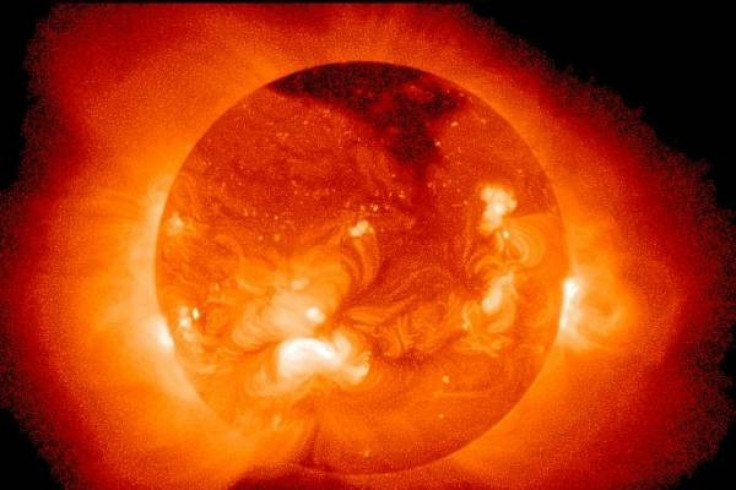Solar event that may have caused last ice age happening again?

New data released Tuesday at the annual meeting of the solar physics division of the American Astronomical Society in Las Cruces, New Mexico, may suggest that we are headed towards a solar event that hasn't happened in hundreds of years.
The new findings came from studies that found a missing jet stream in the solar interior, fading sunspots on the sun's visible surface, and changes in the corona and near the poles - all of which point towards declining solar activity at a time when our closest star should be showing signs of increasing activity.
There are some scientists at the conference believe that the current findings from the studies mean that we are at the beginning of a Maunder Minimum, a decades long period of low solar activity.
The last time such an event occurred was between 1645 to 1715. That solar event is thought to have caused the Little Ice Age that struck Europe and North America. Temperatures in those regions dropped by 1.8 to 2.7 degrees Fahrenheit(1-1.5 degrees Celsius)
According to Frank Hill, the associate director of the National Solar Observatory's Solar Synoptic Network, This is highly unusual and unexpected.
Normally the sun goes through an eleven-year cycle of high and low activity. Scientists had predicted that the Sun, which should be beginning its 25th cycle, would reach a solar maximum in the year 2013, but new findings are beginning to contradict that prediction.
The new studies showed that there was currently no indication that the 25th cycle had started yet. In addition, the previous cycle (cycle 24) had been noted by scientists as being a very dormant cycle, consisting of little activity.
The new findings also follow last week's unusual solar eruption that is being highly talked about in the astronomy community. The event was unusual in the way the solar flare erupted and then fell back to the surface rather than being ejected into space. However, there is no known connection between the studies and last week's event.
In 2001, NASA released a study on the previous Maunder Minimum called Solar forcing of regional climate change during the Maunder Minimum, which noted that although the solar event may have caused the Little Ice Age, there is probably little worry that it will greatly affect our global climate today. One of the report's authors Drew Shindell added, The biggest catalyst for climate change today are greenhouse gases.
Astronomers will be watching the sun carefully over the next couple of years looking for any changes. If it turns out that we are entering a Maunder Minimum it could greatly change scientists' understanding of our closest star.
READ Sony's playstation network was a victim of hacker civil war
© Copyright IBTimes 2024. All rights reserved.











